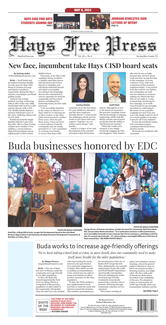In more than half a century in the news business (and still counting), it seems inescapable that the general public is drawn to “bad news.” It just seems to be in our nature to gawk and almost revel at scenes of misery and tragedy.
One of the best arguments showing folks propensity for “blood and gore” is a car wreck on a busy, major thoroughfare.
Naturally, the traffic on the side where the accident occurred is either stopped or crawling along. On the opposite side of the road, for no apparent good reason, traffic is creeping its way past the scene.
Why?
It is my contention that most of us are, if not downright bloodthirsty, drawn to “bad news.” That is, I believe we seem to thrive on someone else’s troubles.
And, that, brothers and sisters, is why the news media will almost always go with the most horrific news as the headline lead story. Morbid curiosity. It’s in every one of us.
However, there are other factors that slow us down through the site of a drastic traffic accident.
One good effect is that often the slow traffic on the opposite side of the roadway has “sobered” us for safer driving. Even we news hawks who’ve raced to the scene to get pictures and the story for what we feel is a waiting, somewhat-bloodthirsty public.
We all – the general public – like bad news; that’s why you’ll see your favorite newspaper’s lead story is likely some tale of woe. And, if it’s got a little blood and gore, then you’re probably going to sell a few more newspapers on the newsstands that week.
An example that comes to mind is my coverage of a wreck more than half a century ago.
As was pretty normal for me, I was working late one night in Rosenberg in the 1960s. The principal highway ran right through the middle of town. My paper – The Fort Bend Mirror – owned a multipurpose van. It was used to haul newspapers from the printing plant to the post office and to the news racks.
The second purpose was to be a rolling billboard. The white van had the name of the paper in big red letters on each side of the vehicle. (A third purpose: it was my principal mode of transportation.)
While I was pounding away on the keyboard in my office that night, a Texas Department of Public Safety (Highway Patrol) car came flying down the street, emergency lights flashing and siren blaring.
I grabbed my camera, ran for the van and took up pursuit of the emergency vehicle out U.S. Highway 90A toward East Bernard. The accident was about 10 miles out and flying low with the Highway Patrol got me there in no time at all. I did notice at one point I was pushing it at near 100 miles per hour.
It was a god-awful scene. A young man who, officers later told me, was obviously drunk, had struck an oncoming vehicle head-on, killing all four passengers. The passengers were two elderly sisters and their two teenaged nephews. All four bodies were still in the car when I arrived.
I wound up taking a lot of photos because, in those days, the DPS was not equipped with their own camera(s). They wanted copies of pictures from all possible angles.
So, I obliged the officers, a not uncommon practice in those more informal times.
After shooting from every possible angle, I got back in my rolling billboard and headed back to Rosenberg. It seemed it was taking forever to get there. I looked at my speedometer and I was doing 45.
It’s amazing the effect of seeing such a horrendous scene can have on you.
Y’all drive careful now, you hear.
Willis Webb is a retired community newspaper editor and publisher of more than 50 years experience.
wwebb1937@att.net




